-
INTRODUCTION
More than twenty years ago, the authors had the chance opportunity to document, in the Los Angeles area, a previously unrecorded hobbyist collection of 24 flaked chert items from southwest Kansas. The entire collection is arranged in Figure 1.
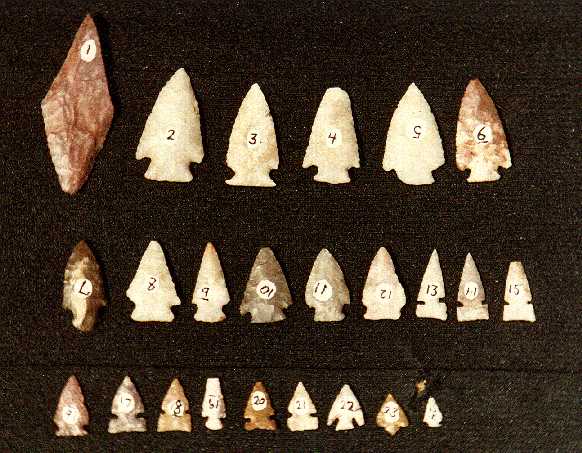
Figure 1. Group photo of the entire McColm collection. The subject Harahey knife in the upper
left corner (item 1) is 7.5 cm long and 3 cm wide. The remainder of the collection
consists of 23 flaked chert projectile points.
All of the artifacts were field-collected by Robert D. McColm during his boyhood in the 1950s. In 1982, and prior to completion of this minor study, McColm moved from the Los Angeles area to South Carolina, taking the collection with him. The bulk of the collected artifacts consist of 23 variously styled projectile points in a wide range of sizes, all but one of which were collected south of the Cimarron River and within a 15-mile radius of the town of Hugoton in Stevens County, Kansas. The distinctive centerpiece and only non-projectile point in the McColm collection is a diamond-shaped bifacial tool traditionally known in Plains archaeology as a Harahey knife (Figures 1-5). Waldo Wedel described the tool type as "diamond-shaped four-edged knives, with adjoining edges oppositely beveled...” (1959: 403). The example from Stevens County is a remarkably uniform and well-finished implement, 7.5 cm. long, made from high-quality red chert.
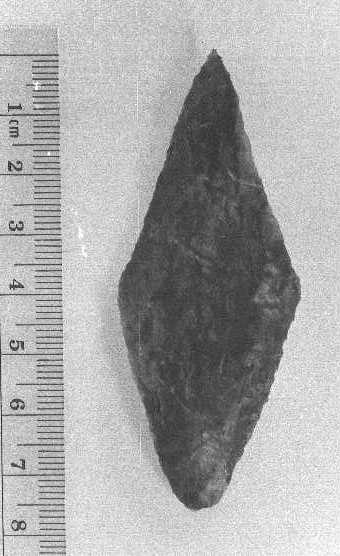
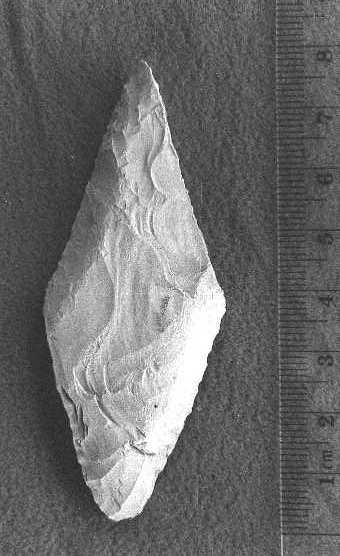
Figure 2. Left: ventral side of the McColm collection Harahey knife. Right: ventral side of the Harahey knife coated with ammonium chloride "smoke" for detail enhancement.
Tools of general ovate form exist in California, of course, but the distinctly diamond-shaped, alternately-beveled variety appears to be absent in California literature. The present study was completed years ago, but the authors believe that the references they cite, though not current, would still be useful to other researchers, and certainly the diamond-shaped knife that McColm collected is an exceptionally fine example of the classic type, worth including in the literature.
LIMITED PROVENIENCE
As a boy, McColm was in the habit of collecting "arrowheads" on casual excursions or as he accompanied his father on maintenance trips to various gas line metering stations in outlying areas of Stevens County, Kansas. Due to the more memorable design of the Harahey knife and the proximity of a familiar road intersection, he was able to specify the site location more clearly than in his recollections of the scattered projectile point finds. McColm was confident that he had found the knife when he was 13 years old in July of 1956, and he pointed out the approximate location on a road map as 12 miles northeast of the town of Hugoton, five miles southeast of the town of Moscow, 9 miles southwest of the Cimarron River; 6 miles north of Highway 270, and two miles east of the Hooker-Moscow Road. Beyond the fact that it was an isolated surface find, however, he did not recall any more specific circumstances of location and context.
McCOLM KNIFE DESCRIPTION
The diamond-shaped knife that McColm collected (Figures 1-5) is excellent for its uniformity of thickness, edge angle control, and accurate execution of form. The authors believe that the elongated diamond shape was in all respects the intent of original manufacture, not the result of repeated sharpening or alteration of a more conventional ovate tool. The knife is 7.5 cm. long, 3 cm. wide, 0.5 cm. in average thickness, and weighs 16.13 grams. The item was manufactured from a large percussion-struck flake of vitreous red chert, Munsell Color 10R 3.5/4, between weak and dusky red (Munsell Soil Color Charts 1975). The original flake was probably much larger than the finished product, and a great deal of reduction was necessary to form the tool. No trace of the curving lateral section of the original flake is seen in the completed knife.
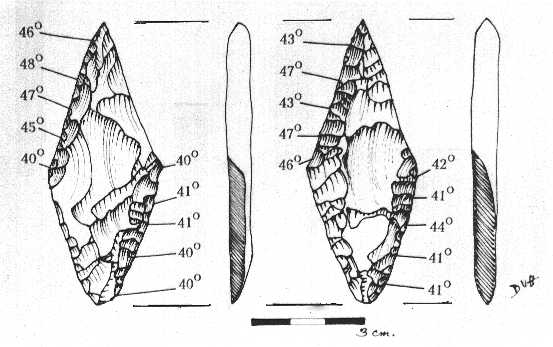
Figure 3. Ink drawing of the Harahey knife including edge angle measurements.
Flintworking details are displayed in close-up photographs after the artifact was coated with ammonium chloride smoke (Figures 2, 4, and 5). The removal of large, broad percussion flakes from the facial surfaces and the use of primary and secondary pressure retouch in detailed shaping and edge angle regulation are well defined. The absence of shallow percussion bulb cavities at the bases of the broad facial retouch scars indicates that these flakes were removed prior to final shaping of the edges. The curving, invasive pressure retouch on the lower left edge (best seen in Figures 2 and 3) served to remove the residual percussion bulb on the original flake (thus, the side shown in the photo and drawing is the ventral side of the original flake).

Figure 4. Lateral view of the Harahey knife. Note opposite beveling and uniform thickness of the tool.
Only the top side is coated in ammonium chloride.
The pressure retouch on each edge is entirely unifacial, but each side of the diamond-shaped specimen has one inversely retouched edge and one normally retouched edge. The 40 to 48 degree edge angles are relatively thick and strong (best illustrated in Figures 3 and 4) and are more indicative of scraping surfaces than efficient cutting edges. This is not to say, however, that the McColm knife could not have served as a dull but durable cutting implement. Unfortunately, the uniformly beveled edges show no definite indication of wear. The pointed ends of the major axis also show no evidence of use. Indeed, the ends are not specially flaked or sharpened and merely represent the locations where two opposite beveled edges converge, one above the other.
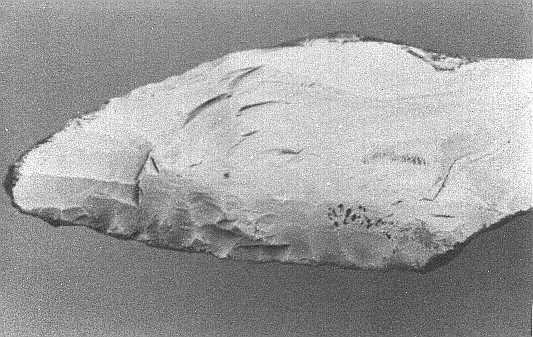
Figure 5. Close-up of one beveled edge. Ammonium chloride coating is marred in places from handling.
THE DIAMOND-SHAPED KNIFE TYPE
The word Harahey (or Arahey) was first recorded in 1541 as the name of a region or group of settlements that Indian informants described to Coronado during his expedition into Kansas (Wedel 1959: 61; 1961:103, 105, 108ff). According to the late Franklin Fenenga, founding editor of The Plains Anthropologist and later professor emeritus at California State University at Long Beach, the term "Harahey knife" has long been a customary name, especially in Kansas and Nebraska, for the diamond-shaped type wherever it is found on the Great Plains. Although other forms of beveled tools were earlier used, the majority sense of consulted references indicates initial occurrence of diamond-shaped, four-edged knives in the late prehistoric phase of the Plains Village Period; that is, at some indefinite point in the period A.D. 1000 to 1550 (Early Plains Village chronology according to Gordon Willey [1966: 313-315, 320]).
The Harahey knife appears to be primarily, though not exclusively, distributed in the Central and Southern subareas of the Great Plains. Diamond-shaped knives have been noted as characteristic artifacts of the Central Plains from early to late village times (Lehmer 1954:144, 146-147, 153; Franklin Fenenga, personal communication) and are mentioned and illustrated in artifact inventories in Kansas and Nebraska from as early as the Upper Republican Aspect (as by Wedel 1959: 400, 403-404). Occurrences of diamond-shaped beveled knives have also been reported from sites at Antelope Creek and Optima in the Texas and Oklahoma panhandles said to be coeval with the Upper Republican culture (Krieger 1946: 44, 59, 61; Watson 1950:32-35, 46, 50, 56-61 passim; Bell 1951: 83-85, 88).
Although Alex Krieger (1946: 44) included the diamond-shaped beveled knife on his trait list of the early Antelope Creek Focus, he indicated that the greatest extent of beveled knife distribution elsewhere in Texas (ibid.: 141-142) dates from the Plains protohistoric and historic periods (a Plains time-frame, according to Willey [1966: 313-315], extending from circa A. D. 1550 to 1800 and later).
Speaking of four main types of beveled knives, Poteet had earlier observed (1938: 246) that although beveled knives had been reported from deeply stratified sites in the Texas Panhandle, Wyoming, and Oklahoma, none had been found more than 12 inches below the surface in Texas south of a line extending from Lubbock to Texarkana. She noted, as others have, that beveled knives were fairly well-distributed throughout bison country, although different types appeared to be more prevalent in certain places. She mentioned (ibid.:260) that the great majority of beveled knives reported from the Panhandle Ruins were what she classified as the diamond-shaped "knife type B" variety (represented by the McColm specimen). Two additional illustrations of this classic type, both from Hutchinson County in Texas, were published by Hothem (1986: 70, 72). With apparent reference to the general distribution of all four types of beveled knives, Poteet stated that many facts supported the theory that the tools were very recent (ibid.: 245). She based her study primarily on central and east Texas collections, however, and wrote at a time when the greatest share of data relating to early village sites in the Central Plains was as yet unknown or unpublished. Indeed, areas outside of Texas are mentioned only sparingly in her report, and Kansas and Nebraska not at all.
In a more recent study of beveled knives, J.B. Sollberger broadly wrote (1971: 218) that the diamond-shaped or Harahey knife "is deemed by hypothesis to be an innovation of late professional buffalo hunters." Contrary to our opinion of the McColm knief, Sollberger insisted that beveled, diamond-shaped knives were not the product of original manufacture but rather the result of subsequent and repeated unifacial retouch performed on originally unbeveled bifaces (ibid.: 209-218 passim). His cited knife examples, however, are confined to Texas south of the Panhandle and do not include an alternately beveled knife any farther north than Lamar County on the Oklahoma border (ibid..: 217).
There is considerable variation of form and workmanship among four-edged diamond-shaped knife examples described and illustrated in the literature. In marked contrast to the knife collected by Robert McColm, some specimens are long and narrow (Krieger 1946: 325, specimens j, k; Sollberger 1971: 217, specimen 6B; Hothem 1986: 73). Other examples appear to be little more than ovate or elliptical in form or only roughly diamond-shaped (Krieger 1946: 113, specimens c, d; Watson 1950: 34-35, specimens F, G, H, I; Green and Hester 1975: specimens a, b, c; Sollberger 1971: 217, specimen 7A; Hothem 1986: 70-72). A curious form exists in which the maximum width perpendicular to the major axis is located nearer to one end of the knife, thus resulting in a sort of offset diamond (kite-shaped) with two short and two long edges (Poteet 1938: 245, 255, example A; Watson 1950: 33, 45, specimen C; Bell and Baerreis 1951: 85, specimen 5; Hothem 1986: 70). Wedel described two Upper Republican Harahey knives from Kansas (1959: 403-404 and plate 63, specimens a, b) that were "not fashioned with very great skill or regularity" and have "weak" beveling. Krieger (1946: 113, 119, specimen c) described and illustrated a narrow, four-edged, and roughly diamond-shaped tool from the Texas Panhandle that has a chipped "drill shaft" at one end. A similar item was illustrated by Hothem (1986: 12). Also displayed in Hothem's book is a Harahey knife "from an Early Plains Apache site" with a fluted base, said to possibly be a refashioned Clovis point (ibid.: 73).
CONCLUDING REMARKS
The consulted literature has disclosed an accepted belief that diamond-shaped knives with opposite bevels were essentially butchering implements, and the late Franklin Fenenga, much experienced with Great Plains artifacts and literature, advised the authors that there was no serious doubt that the knife type was extensively used for that purpose. After examining the McColm knife, however, the authors do not believe that that particular specimen would have best served as a slicing instrument in the butchering process. The remarkable regularity of the edge angles (measured in Figure 3) makes it clear that the maker intended the bevels to measure as they do, between 40 and 50 degrees. Beveled angles such as these are too blunt for great efficiency in butchering procedures requiring slicing or sawing edges. Without denying that the McColm knife could have served as a rather dull slicing tool, it appears to us that the stoutly-edged specimen would have served more efficiently as a scraping implement. The authors have noted that the applicability of beveled knives to non-slicing functions involved in butchering, or to activities not directly concerned with butchering, appears to have been largely ignored in the literature. Sollberger argued (1971: 211) that because buffalo hunters often had to work where good stone materials were scarce, edge sharpness was sacrificed in the interest of edge angle durability in order to conserve the tool. The authors reason, however, that one reasonably good core could produce multiple flakes with far sharper edges than are found on the McColm knife.
The California-based authors have had the opportunity to examine a single Harahey knife specimen only, and edge angle readings and other detailed morphological data were, at the time of their study, generally lacking in published descriptions of beveled knives. The authors can only surmise that there are similarly shaped knives that are more acutely beveled and better suited for slicing or sawing in the butchering process than the McColm specimen. In any case, clear and reasonable is Sollberger's observation that with alternate beveling the four-edged tool had merely to be flipped over in the hand or turned end-for-end in order to present a fresh and similarly oriented edge (ibid.: 211). This convenient characteristic would have made oppositely beveled, diamond-shaped knives well and cleverly suited for repetitive or rapid production processes involving either slicing or scraping.
ACKNOWLEDGMENTSThis paper was accepted for publication by The Journal of New World Archaeology in 1987, but that UCLA-based series was discontinued prior to publication of the manuscript. Nevertheless, the authors wish to thank Dr. Brian Dillon, former editor of New World Archaeology, for his helpful review and editing suggestions. The late Professor Franklin Fenenga, California State University, Long Beach, is much appreciated and warmly remembered for his review of the present paper and for his support and friendship through the years. Thanks also to David C. Crammer for photographic assistance.
CITED REFERENCES
Bell, Robert E. and David A. Baerreis
1951 A Survey of Oklahoma Archaeology. Bulletin of the Texas Archaeological and Paleontological Society, Vol. 22: 7-100.Green, L.M. and Thomas R. Hester
1975 The Finis Frost Site: A Toyah Phase Occupation in San Saba County, Central Texas. Bulletin of the Texas Archaeological Society, Vol. 44: 69-88.Hothem, Lar
1986 Collecting Indian Knives, Identification and Values. Books Americana. Florence, Alabama.Krieger, Alex D.
1946 Culture Complexes and Chronology in Northern Texas. The University of Texas Publication No. 4640. Austin, Texas.Lehmer, Donald J.
1954 Archaeological Investigations in the Oahe Dam Area, South Dakota, 1950-51. River Basin Survey Papers, No. 7. Bureau of American Ethnology, Bulletin 158. Smithsonian Institution.Munsell Soil Color Charts
1975 Munsell Soil Color Charts. Macbeth Division of Kollmorgen Corporation. Baltimore, Maryland.Poteet, Sybil
1938 The Occurrence and Distribution of Beveled Knives. Bulletin of the Texas Archaeological and Paleontological Society, Vol. 10: 245-262.Sollberger, J.B.
1971 A Technological Study of Beveled Knives. Plains Anthropologist, Vol. 16, No. 53: 209-218.Watson, Virginia
1950 The Optima Focus of the Panhandle Aspect: Description and Analysis. Bulletin of the Texas Archaeological and Paleontological Society, Vol. 21: 7-68.Wedel, Waldo R.
1959 An Introduction to Kansas Archaeology. Bureau of American Ethnology Bulletin 174. Smithsonian Institution.1961 Prehistoric Man on the Great Plains. University of Oklahoma Press. Norman, Oklahoma.
Willey, Gorden R.
1966 An Introduction to American Archaeology, Vol. 1. Prentice-Hall. Englewood Cliffs, New Jersey.
